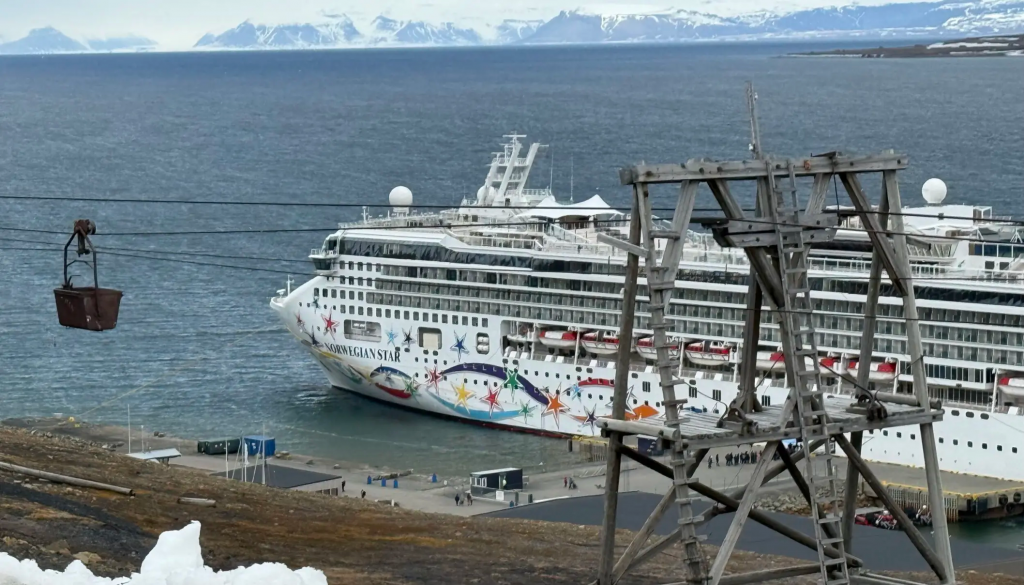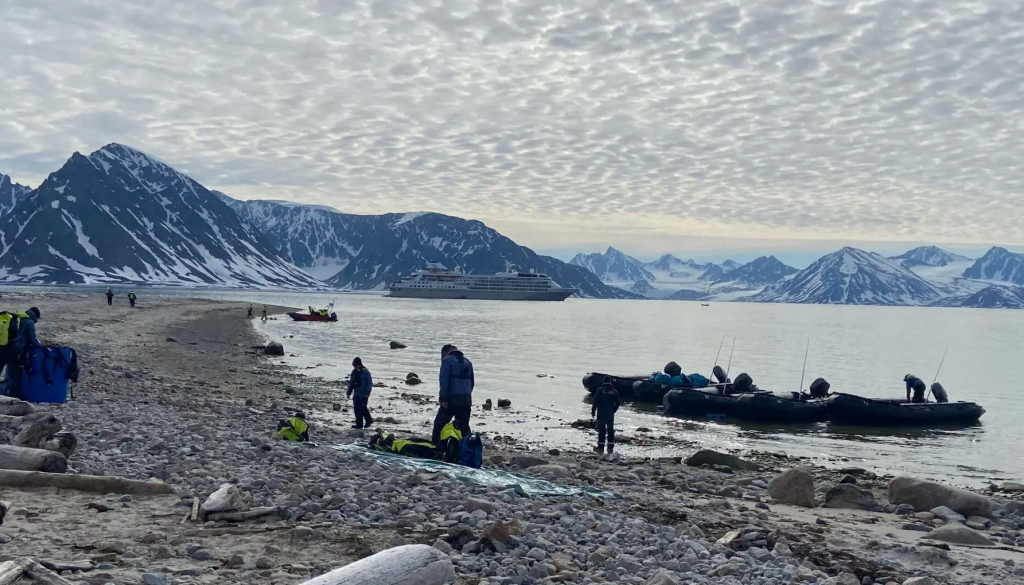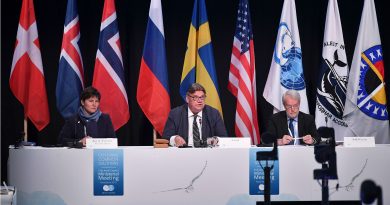Cruise ship season begins at Svalbard

Crowds of passengers disembarked and outnumbered local residents in the centre of Longyearbyen on Saturday.
Not long after the Norwegian Star docked at port in Longyearbyen could local businesses start count money. Shops, cafes, art galleries and the museum were filled up with visitors.
Tourism is now the major income for the town as the traditional coal mining shuts down later in June.
Happy cruise passengers made selfie for memory together with the statue of an coal miner, most without knowledge of the significant turning point in history for Longyearbyen.
The Norwegian Star was the first ship with more than 2,000 passengers calling on Svalbard this summer. The second giant, the Aidaluna, arrives already on Monday.
A recently released study made for Visit Svalbard and Svalbard Cruise Forum says the total revenue generated by cruise tourism for Longyearbyen in 2024 was 361 million kroner (€31 million). That counts for 9% of all economy at Svalbard.

Average spending per passenger sailing expedition cruises show an average of 2,227 kroner, while on conventional cruises they spent 1,886 kroner, the study tells.
457 port calls are announced to Longyearbyen from now until the last ship will dock on October 14, according to an overview by Visit Svalbard. Most ships are smaller expedition cruise ships that sails out of, and returns to, Longyearbyen during the summer season.
What makes Svalbard so popular among cruise ship operators is the airport.
Longyearbyen is the only destination within the high Arctic where passengers can fly by commercial airliners or charter planes to embark and disembark, saving the expedition cruise ships several days of voyage at open sea compared with sailing from a port at mainland Europe into the white Arctic.
Although super-expensive, the expedition cruising is most popular as the smaller vessels can land passengers at wilderness locations where the larger ships can’t dock. Expedition ships bring their own fleet of zodiacs and do therefor not depend on shore infrastructure.

The warming Arctic is one reason for many to buy a two weeks voyage onboard some of the world’s most luxurious expedition ships sailing around the Norwegian Arctic archipelago. Less sea-ice allows for sailings into remote destinations, especially north of Spitsbergen and the Nordaustlandet islands.
Last year, Norwegian authorities introduced stricter environmental regulations in regards to tourism on the archipelago which is located halfway between mainland Norway and the North Pole.
With the new rules, tourists will be more limited to where and how they can make shore landings.
Related stories from around the North:
Canada: Arctic Canadian community plans $100 tax per passenger for cruise ships this season, CBC News
United States: Cruise ship-free Saturdays would ease tourism burden, say some in Juneau, Alaska, The Associated Press



